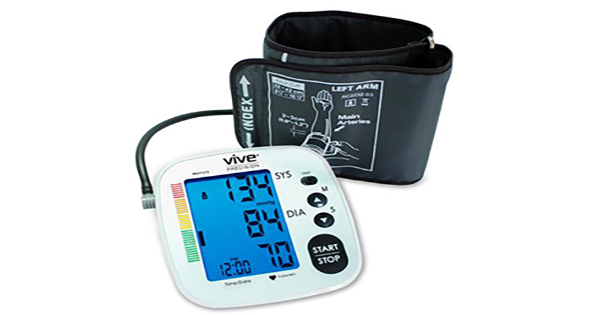LDL-P: How to lower small, dense LDL particles

The development of heart disease is associated with many risk factors. LDL cholesterol level is often used to determine if preventative treatment is needed, such as medication to lower levels in an effort to prevent heart disease.
However, research indicates LDL cholesterol alone is not necessarily a good determinant of risk. LDL particles vary in their content, size, and density. Not all LDL particles impact heart disease risk in the same way.
Light, fluffy versus small, dense LDL particles
LDL particles come in two main sizes: Large, fluffy particles and small, dense particles.
I had these particles explained to me once by picturing dump trucks on a highway. This helped me visualize the role of these different particles. Hopefully it’ll help you…
Picture the large, fluffy particles to be five large trucks transporting a full load on the highway. Now picture small, dense particles to equal twenty small, trucks with a full load on the highway. It takes twenty small trucks to carry the same load five large trucks can transport.
The more “trucks” (ie particles) in your system, the greater your heart disease risk.
Hence the reason it is beneficial to have large, fluffy particles (ie trucks that can carry a lot in fewer loads) versus small, dense particles (ie more trucks to carry the same load).
Continue reading
Home Blood Pressure Monitor: A Review
 Monitoring blood pressure at home is one step you can take to supplement clinic monitoring for a more complete representation of your typical blood pressure throughout the day.
Monitoring blood pressure at home is one step you can take to supplement clinic monitoring for a more complete representation of your typical blood pressure throughout the day.
There are a wide variety of blood pressure monitors available. The American Heart Association, American Society of Hypertension, and Preventive Cardiovascular Nurses Association all recommend upper arm devices for greater accuracy. Avoid wrist and finger monitors.
When purchasing a home blood pressure monitor, it’s important you consult with your doctor or medical supply company to ensure you select an appropriate cuff size.
Vive Precision Blood Pressure Monitor
ViveHealth.com gifted me with a Vive Precision Blood Pressure Monitor along with compensation to review this device. That being said, all opinions in this review are my own.
The Vive blood pressure monitor comes with a large, easy to read display and is battery or AC power compatible. The product I received came packaged with the four AAA batteries needed. It did NOT come with the AC adapter. Looks like it requires a standard DC V6 adapter. I do like battery operated… one less cord to wrangle and the device notifies you if the battery power is getting low.
Where should heart rate after exercise fall?

Heart rate after exercise may be used as an indicator of your heart fitness.
Normal resting heart rate
According to the National Institute of Health, normal average resting heart rate should be:
- 60 – 100 beats per minutes for children 10 years and older, as well as adults/seniors
- 40-60 beats per minute for well-trained athletes
Target heart rate during exercise
For moderate intensity activities your target heart rate is 50 – 69% maximum heart rate. For vigorous activity levels your target heart rate is 70-85% maximum heart rate.
To calculate your target heart rate subtract your age from 220. This gives you your maximum heart rate. Now, multiple your maximum heart rate by 0.5 and 0.69 to obtain your target heart rate range for moderate intensity activities. Multiply your maximum heart rate by 0.7 and 0.85 to obtain your target heart rate range for vigorous activities.
Depending on your goal intensity – moderate vs. vigorous – your heart rate should fall within your target heart rate range during activities.
If you are typically inactive, set your goal for the lower end (50-60% maximum heart rate) and work your way up over time.
There are blood pressure medications that lower maximum heart rates. Discuss with your doctor if you currently take blood pressure medications. Your target heart rate zone may need to be adjusted.
Continue reading
Is it now considered okay to eat saturated fat from butter and tropical oils?
![saturated-fat[1]](https://www.lisanelsonrd.com/wp-content/uploads/2016/07/saturated-fat1.jpg) It’s no wonder so many of us are confused about healthy eating. Even the nation’s dietary experts keep changing their mind about what we should eat and what we should avoid. We asked USC School of Pharmacy Research Professor Roger Clemens to help remove some of the confusion surrounding healthy fats.
It’s no wonder so many of us are confused about healthy eating. Even the nation’s dietary experts keep changing their mind about what we should eat and what we should avoid. We asked USC School of Pharmacy Research Professor Roger Clemens to help remove some of the confusion surrounding healthy fats.
Q: What are the latest dietary guidelines regarding fat and cholesterol?
Dr. Clemens: The 2015 Dietary Guidelines Advisory Committee Scientific Report states that cholesterol is no longer a nutrient of concern. The available evidence shows no appreciable relationship between consumption of dietary cholesterol and serum cholesterol. This is consistent with the conclusion of the American Heart Association and American College of Cardiology report.
Q: Can you explain this change in thinking over the past several decades?
Dr. Clemens: Nutritional science is dynamic. In the 1980s, the Dietary Guidelines suggested consumers avoid too much total fat and saturated fat. Over time, total fat guidelines have been upwardly adjusted with the 2010 Guidelines suggesting diets with up 35 percent of daily calories from fat. The 2015 executive summary suggests no upper limit for total fat consumption. Saturated fat guidelines have similarly evolved and now suggest including up to 10 percent in a healthy diet, and replacing saturated fat with polyunsaturated and mono-unsaturated fat. This thinking may still be changing, however. Current evidence does not clearly support cardiovascular guidelines that encourage high consumption of polyunsaturated fatty acids and low consumption of total saturated fats.
Continue reading
Calorie Counter for Dummies – January Bonus!
THIS MONTH ONLY – When you sign up for a Mini Diet Makeover you’ll not only receive a personalized diet plan outlining the steps you must take to achieve your goals, but you’ll also receive a complimentary copy of The Calorie Counter for Dummies.
Calorie Counter for Dummies – January Bonus
Sign up for a Mini Diet Makeover before January 31st and you’ll receive a complimentary copy of the book Calorie Counter for Dummies!
This handy guide provides a fun and easy way to track your calories.
The Calorie Counter For Dummies is filled with vital information on the nutritional value of both homemade and restaurant foods.
It’s a compact guide you can keep in your briefcase, purse, or backpack for quick and easy reference so you make healthy choices both at home and on the go. Use this guide to take control of your health and make heart healthy choices to lose weight, lower cholesterol, and reduce blood pressure.
The Calorie Counter for Dummies is a great tool you’ll utilize as you implement the personalized diet plan you receive from a Mini Diet Makeover.
A Plan Specific to Your Needs
A Mini Diet Makeover is a personalized diet plan outlining the step-by-step changes you need to take for success. I personally evaluate your diet and lifestyle habits to provide a customized plan just for you. You can learn more and sign-up at https://www.lisanelsonrd.com/minidietmakeover.html
A Mini Diet Makeover includes:
Detailed assessment
Receive answers to how your age, stress, hormones, lifestyle habits, and food choices are affecting your heart health and weight.
Step by step diet makeover
See what you’re doing right and where you’re going wrong. You’ll be given small changes to break habits that are keeping you stuck.
Customized weight loss and health plan
Implement the plan immediately to achieve your heart health and weight loss goals.
Inexpensive, Expert Guidance
Access to a heart health and weight loss specialist at a great savings. No hidden fees or subscription dues.
Learn more and sign-up at https://www.lisanelsonrd.com/minidietmakeover.html
Here’s to a fitter and healthier 2010!
All the best,
Lisa Nelson RD
Heart Healthy Tips
http://www.hearthealthmadeeasy.com
Best Weight Loss Plan – Team Member #4
If you’ve been following along, here is the fourth and final member to put together your best weight loss plan and complete your team. We’ve already covered:
1. Doctor
2. Nutritionist
3. Personal Trainer
Successfully losing weight and maintaining the weight loss requires several different factors all working together. Get a team of experts behind you to successfully to achieve the long-term weight loss you desire.
Support Group
One of those factors is a strong support system to encourage and support you as you work towards your goal. Losing weight doesn’t have to be tackled by yourself and you drastically increase your rate of success by surrounding yourself with individuals supporting you, such as what you receive from the NewU group dietitians and members. Changing your habits, such as cutting back on portion sizes, selecting healthier options, making time to workout by yourself can lead to feelings of loneliness and possibly after time depression. And where does depression lead? That’s right, to some good ole comfort foods that are usually not the best choices to go overboard on if you want to lose weight! Participating in a support group is critical to overcoming the challenges everyone faces on the road to weight loss.
Family and friends are not always the best option for support. Usually because they’ve been apart of your unhealthy lifestyle and they may unconsciously sabotage your efforts, such as inviting you out for drinks or dinner. You find yourself being “different” than the group, which can be difficult. Not that you’re going to cut off your current family and friends, just know they can present an unexpected obstacle. You can persuade your friends to join you by explaining why and what you’re doing and ask them to be supportive and finding alternative activities you can do together, such as instead of dinner meeting at the park for a walk.
Also, remember your family and friends will have their own opinion about what you should and shouldn’t be doing when it comes to weight loss. Not necessarily the best source for nutrition and fitness advice, which is why you want all your necessary weight loss team players in place!
Team Member #1
Team Member #2
Team Member #3
All the best,
Lisa Nelson RD
Top 5 Key Strategies to Lose Weight Permanently




